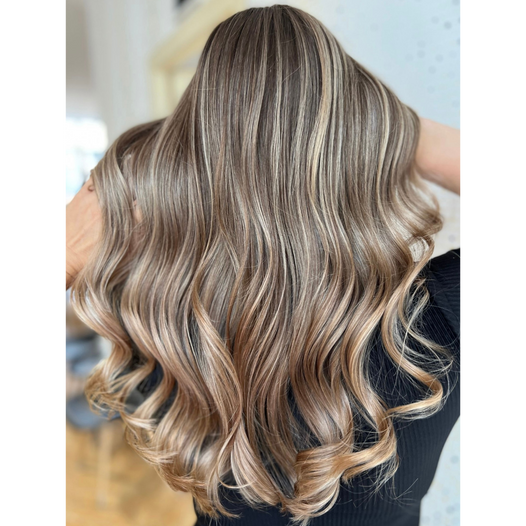
How to Tell if You Have Dry Scalp or Dandruff: Understanding the Differences, Causes, and Treatments

Scalp issues are common, but they can be confusing, especially when it comes to distinguishing between dry scalp and dandruff. Both conditions involve flaking and itching, but they stem from different causes and require different treatments. Understanding the difference between dry scalp and dandruff is essential for effective management. Here’s a guide to help you identify which condition you might have, the causes behind each, and the best treatment options.
Understanding the Difference Between Dry Scalp and Dandruff
While both dry scalp and dandruff result in flakes and discomfort, they are not the same thing.
- Dry Scalp: A dry scalp occurs when your scalp doesn’t produce enough natural oils to keep the skin moisturized. The result is a dry, itchy, and flaky scalp. The flakes from a dry scalp tend to be small and white, and you may notice that your hair and skin feel dry overall.
- Dandruff: Dandruff, on the other hand, is usually caused by an overgrowth of a yeast-like fungus called Malassezia, which thrives on the oils (sebum) on your scalp. This leads to an inflammatory response, causing the scalp to shed large, oily, yellowish flakes. Unlike dry scalp, dandruff can cause excessive oiliness in the hair and scalp.
Key Differences Between Dry Scalp and Dandruff
Flake Size and Appearance:
Dry Scalp: Flakes are typically small, white, and dry.
Dandruff: Flakes are larger, yellowish, and greasy.
Scalp Condition:
Dry Scalp: The scalp is generally dry, tight, and can feel irritated. The skin on other parts of your body may also be dry.
Dandruff: The scalp may feel oily or greasy, and the hair can appear shiny or oily.
Itchiness:
Dry Scalp: Itching is due to dryness and irritation from lack of moisture.
Dandruff: Itching is caused by an inflammatory reaction to the overgrowth of yeast.
Causes of Dry Scalp
Dry scalp is often the result of factors that strip the scalp of its natural moisture.
Cold Weather: Low humidity and cold air during winter months can dry out the skin, including the scalp.
Overwashing: Washing your hair too frequently or using harsh shampoos can strip the scalp of its natural oils, leading to dryness.
Dehydration: Not drinking enough water can contribute to dry skin and scalp.
Skin Conditions: Conditions like eczema or psoriasis can also cause a dry scalp.
Causes of Dandruff
Dandruff is usually caused by factors that encourage the overgrowth of Malassezia yeast on the scalp. These factors include:
Oily Scalp: Excess oil production can feed the Malassezia fungus, leading to dandruff.
Poor Hygiene: Infrequent washing of the hair can allow oils and dead skin cells to accumulate, providing a breeding ground for fungus.
Skin Conditions: Conditions like seborrheic dermatitis or psoriasis can exacerbate dandruff.
Stress: Stress can trigger or worsen dandruff by affecting the body’s immune response.
Treatment for Dry Scalp
Treating dry scalp involves restoring moisture and protecting the scalp from further dryness. Here are some effective treatments:
Moisturising Shampoos and Conditioners: Use gentle, hydrating shampoos that are free from harsh chemicals and sulfates. Follow up with a moisturizing conditioner.
Oil Treatments: Regularly massage your scalp with natural oils like coconut oil, olive oil, or jojoba oil. These oils help to lock in moisture and soothe dryness.
Reduce Washing Frequency: If you wash your hair daily, consider reducing the frequency to avoid stripping your scalp of its natural oils.
Humidifiers: Use a humidifier in your home during the winter months to add moisture to the air and prevent scalp dryness.
Treatment for Dandruff
Dandruff treatment focuses on controlling the fungal growth and reducing excess oil production. Here’s how to manage dandruff effectively:
Anti-Dandruff Shampoos: Use shampoos containing active ingredients like zinc pyrithione, selenium sulfide, ketoconazole, or salicylic acid. These ingredients help control fungal growth and reduce flaking.
Tea Tree Oil: Shampoos with tea tree oil or adding a few drops of tea tree oil to your regular shampoo can help reduce dandruff due to its antifungal properties.
Regular Hair Washing: Washing your hair regularly can help remove excess oils and prevent dandruff. Be sure to rinse thoroughly to remove all shampoo and conditioner residues.
Diet and Lifestyle: Reduce stress and maintain a balanced diet rich in vitamins and minerals that support scalp health, such as zinc and B vitamins.
When to See a Dermatologist
If you’ve tried home remedies and over-the-counter treatments without success, it may be time to consult a dermatologist. Persistent or severe cases of dry scalp or dandruff can sometimes indicate an underlying condition, such as seborrheic dermatitis, psoriasis, or an allergic reaction, which may require specialised treatment.
Distinguishing between dry scalp and dandruff is crucial for choosing the right treatment. Dry scalp is caused by a lack of moisture, leading to small, white flakes and overall dryness, while dandruff is often the result of fungal overgrowth, producing larger, oily flakes. By understanding the causes and identifying your symptoms, you can effectively treat and manage your scalp condition, whether it’s restoring moisture to a dry scalp or controlling the fungal growth that causes dandruff. With the right care, you can achieve a healthy, flake-free scalp.









Leave a comment